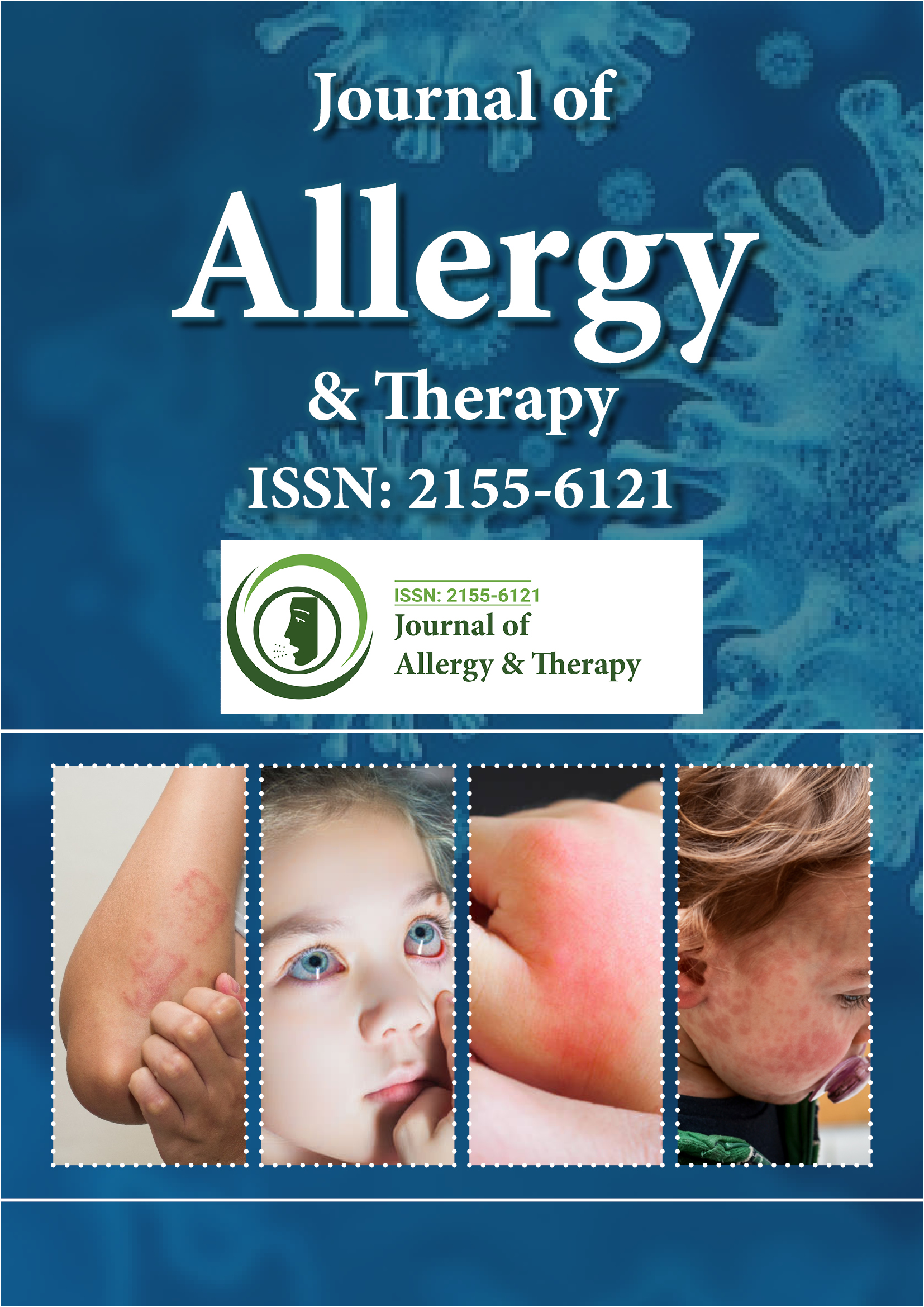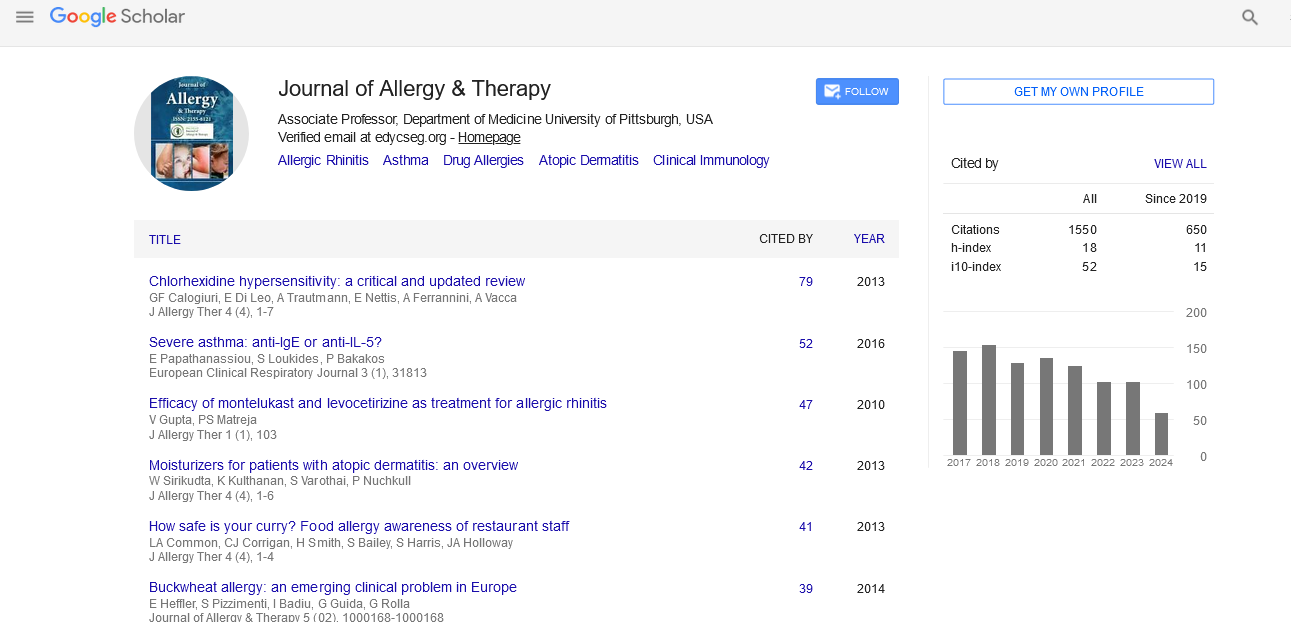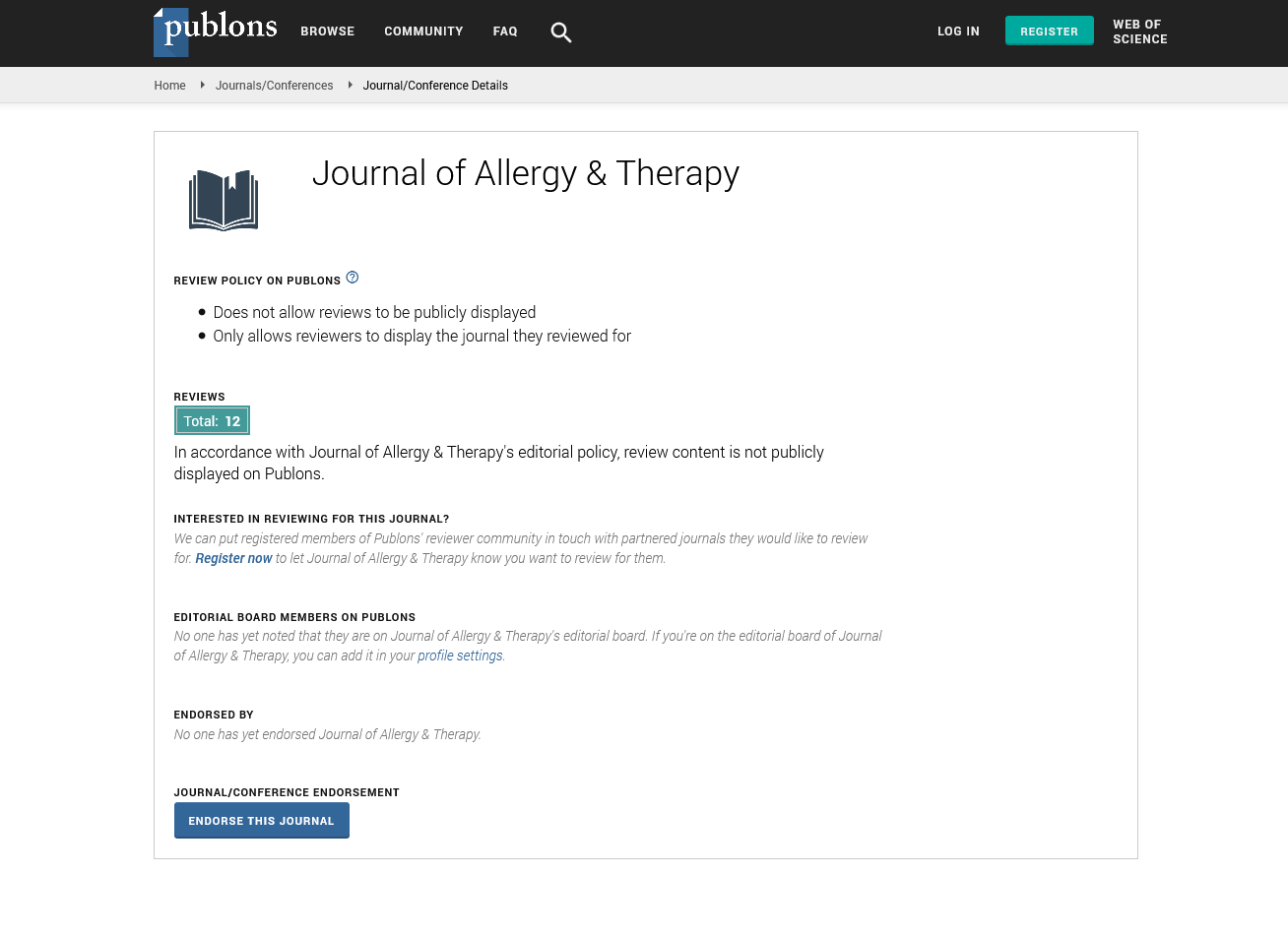PMC/PubMed Indexed Articles
Indexed In
- Academic Journals Database
- Open J Gate
- Genamics JournalSeek
- Academic Keys
- JournalTOCs
- China National Knowledge Infrastructure (CNKI)
- Ulrich's Periodicals Directory
- Electronic Journals Library
- RefSeek
- Hamdard University
- EBSCO A-Z
- OCLC- WorldCat
- SWB online catalog
- Virtual Library of Biology (vifabio)
- Publons
- Geneva Foundation for Medical Education and Research
- Euro Pub
- Google Scholar
Useful Links
Share This Page
Journal Flyer

Open Access Journals
- Agri and Aquaculture
- Biochemistry
- Bioinformatics & Systems Biology
- Business & Management
- Chemistry
- Clinical Sciences
- Engineering
- Food & Nutrition
- General Science
- Genetics & Molecular Biology
- Immunology & Microbiology
- Medical Sciences
- Neuroscience & Psychology
- Nursing & Health Care
- Pharmaceutical Sciences
Opinion Article - (2023) Volume 14, Issue 6
Consequences for Treating Pneumonia in Children: Penicillin Allergy Label Complexity
Yang Hua*Received: 27-Nov-2023, Manuscript No. JAT-23-24383; Editor assigned: 30-Nov-2023, Pre QC No. JAT-23-24383 (PQ); Reviewed: 14-Dec-2023, QC No. JAT-23-24383; Revised: 21-Dec-2023, Manuscript No. JAT-23-24383 (R); Published: 30-Dec-2023, DOI: 10.35248/2155-6121.23.14.368
Description
Penicillin allergy is a common medical concern that affects a significant portion of the population, including children. Pneumonia, a respiratory infection causing inflammation of the lungs, is a prevalent childhood illness. This essay explores the impact of a penicillin allergy label on the clinical outcomes of pneumonia in children. Understanding how such labels influence treatment decisions and patient outcomes is important for providing optimal care for pediatric patients.
Penicillin allergy prevalence and misconceptions
Penicillin allergy is one of the most frequently reported drug allergies. Studies suggest that a significant number of individuals labeled as penicillin-allergic may not be truly allergic, as these labels often result from non-allergic reactions or are based on historical events that are not indicative of a true allergic response. The prevalence of penicillin allergy in children complicates the choice of antibiotics for common infections, including pneumonia.
Clinical impact on pneumonia treatment
The presence of a penicillin allergy label can impact the choice of antibiotics for treating pneumonia in children. Penicillins and cephalosporins, which share a similar beta-lactam structure, are commonly avoided in patients with a reported penicillin allergy due to concerns about cross-reactivity. This avoidance can lead to the use of alternative antibiotics, such as macrolides or fluoroquinolones, which may have different efficacy and safety profiles.
Research indicates that the avoidance of beta-lactam antibiotics in children with penicillin allergy labels is associated with suboptimal treatment outcomes in pneumonia cases. Betalactams are often the first-line agents for treating bacterial infections, including pneumonia, and their avoidance may result in the use of less effective or broader-spectrum antibiotics,contributing to antibiotic resistance and increased healthcare costs.
To improve the management of pneumonia in children with penicillin allergy labels, there is a growing emphasis on accurate allergy testing. Allergy testing, including skin tests and specific IgE blood tests, can help identify individuals who are genuinely allergic to penicillin and those who can safely tolerate beta-lactam antibiotics.
Antimicrobial stewardship programs play a major role in optimizing antibiotic use and mitigating the impact of penicillin allergy labels. Healthcare providers are encouraged to collaborate with allergists and immunologists to assess the validity of reported penicillin allergies. De-labeling patients who are not truly allergic can guide the selection of appropriate antibiotics, improving the overall quality of care and patient outcomes.
Addressing the psychological impact
In addition to the clinical implications, the psychological impact of a penicillin allergy label on children and their parents cannot be overlooked. The fear of severe allergic reactions may lead to anxiety and reluctance to use beta-lactam antibiotics, even when they are the most appropriate choice. Healthcare providers need to engage in effective communication to educate patients and parents about the importance of accurate allergy assessments and the potential consequences of unnecessary antibiotic avoidance.
Future directions
Future research should focus on the development of strategies to improve the accuracy of penicillin allergy assessments in children. Advances in diagnostic tools and a better understanding of the immunological mechanisms underlying drug allergies can contribute to more precise identification of true penicillin allergies.
Conclusion
The impact of a penicillin allergy label on the clinical outcomes of pneumonia in children is a multifaceted issue. It influences treatment decisions, patient outcomes, and contributes to broader challenges such as antibiotic resistance.
Emphasizing accurate allergy testing, engaging in antimicrobial care practices, and addressing the psychological aspects of penicillin allergy labels are essential steps toward enhancing the care provided to pediatric patients with pneumonia. By navigating these complexities, healthcare professionals can ensure that children receive optimal and personalized treatment for respiratory infections, ultimately improving overall health outcomes.
Citation: Hua Y (2023) Consequences for Treating Pneumonia in Children: Penicillin Allergy Label Complexity. J Allergy Ther. 14:368.
Copyright: © 2023 Hua Y. This is an open access article distributed under the terms of the Creative Commons Attribution License, which permits unrestricted use, distribution, and reproduction in any medium, provided the original author and source are credited.


